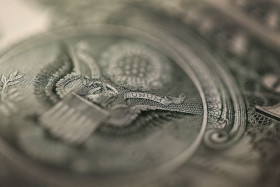The US dollar is continuing its winning streak on foreign exchange markets during the Labor Day holiday. The greenback has been staging a rebound over the last several trading sessions after cratering 11% since hitting a peak of 103.00 earlier this year at the height of the coronavirus pandemic. The buck has been rallying on a multitude of factors, including bullish economic data and COVID-19 concerns, but analysts are still maintaining a bearish view on the currency.
Last week, the Bureau of Labor Statistics (BLS) reported that the US economy added 1.371 million new jobs in August, slightly lower than the market forecast of 1.4 million. The unemployment rate also came in at a lower-than-expected reading of 8.4%, down from 10.2% in July.
This came one day after the initial jobless claims declined to their lowest levels since the pandemic started. In the week ending August 29, the number of Americans filing for first-time unemployment benefits totaled 881,000, beating the median estimate of 950,000.
Non-manufacturing data also contributed to the US economic rebound. The IHS Markit services purchasing managersâ index (PMI) surged to 55 in August, while the composite PMI climbed to 54.6 â anything above 50 indicates expansion. Also, most of the Institute for Supply Managementâs (ISM) non-manufacturing readings advanced beyond 50, such as business activity (62.4), prices (64.2), new orders (56.8), and the PMI (56.9). Employment was the only metric that slumped to 47.9.
On Friday, inflation data will be released, and analysts are penciling a consumer price index (CPI) boost of 0.3% in August.
US-China geopolitical tensions continue to escalate, giving the greenback some support. Last week, the US announced that it would be considering a ban on exports of components from Chinese chipmaker SMIC, and there have been reports that the White House is mulling over a prohibition of Tencentâs WeChat mobile application. Chinese state-owned media reported that President Xi Jinping and his Communist government are thinking about unloading more of its US Treasury holdings.
Later this month, the Federal Reserve will hold its September Federal Open Market Committee (FOMC) meeting, and it is anticipated that policymakers will offer more details on the central bankâs new inflation approach. In August, Fed Chair Jerome Powell announced that the Fed would allow inflation to run above its 2% target rate and keep interest rates lower for longer, which weighed on the dollar.
Overall, economists are maintaining their bearish sentiment over the greenback, with inflation being the biggest threat to the dollarâs survival in this market.
The US Dollar Index, which measures the greenback against a basket of currencies, rose 0.35% to 93.04, from an opening of 92.72, at 13:44 GMT on Monday. The index is coming off a weekly gain of 0.6%, but it is still down 3.5% year-to-date.
The USD/CAD currency pair jumped 0.19% to 1.3090, from an opening of 1.3066. The EUR/USD tumbled 0.14% to 1.1824, from an opening of 1.1839.
If you have any questions, comments, or opinions regarding the US Dollar, feel free to post them using the commentary form below.
US Dollar Index Tops 93.00 As Bullish Data Supports Greenback
